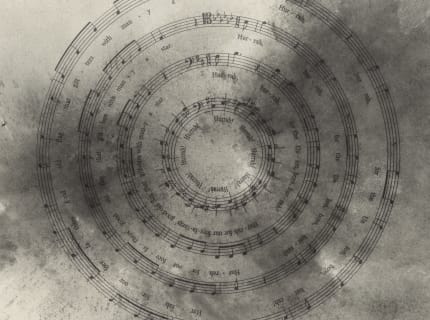“Paper is fragile, and it’s temporary. It heals itself but it holds abrasions to its surface,” said Bethany Collins on a video call in the days leading up to her exhibition “Undercurrents” with Alexander Gray Associates in New York. “It shows everything—the life of the paper. It’s as much a metaphor for the body as I can find in material form,” she explained.
The exhibition, on view through December 16, 2023, is her first with the gallery, which she joined late last year. “Undercurrents” traces Collins’ interrogation of language, text, and the limits of paper as a medium. The show traverses four key bodies of work, which engage with everything from Ancient Greek literature to the Black Lives Matter protests of 2020.
A newer addition to her practice is a series of cast paper works, part of the “Old Ship” series. “They’re not language-based, so the work makes me nervous,” Collins said with a laugh. Created with handmade paper mixed with pink granite dust from the base of the since dismantled Confederate monument to Stonewall Jackson in Charlottesville, Virginia, the works are molded in the shape of architectural details from the Old Ship AME Zion Church, the oldest Black church in Montgomery, Alabama, Collins’s hometown. Made in collaboration with Dieu Donné in Brooklyn, these works are slated for exhibition with LAXART and MOCA LA in 2025. “I like this idea that the monument to a traitor that’s been exalted on the landscape for so long, that its destruction then could aid in the support of another kind of monument. It’s also of another space, another community, another story that’s much more worthy of remembrance.”
The exhibition continues with a selection of “song drawings,” works that engage with contrafactum, a term used in music to describe songs where the melody stays unchanged, but the lyrics are altered. One of the primary source materials Collins used, enlisting the assistance of a composer in creating the compositions, was the song “The Bonnie Blue Flag,” which was sung widely by Confederate soldiers during the Civil War, with Union soldiers adapting and creating their own renditions—the latter of which Collins used exclusively in the work.
“I worked with a composer to transpose the song into the circular scores to mimic Haydn’s Ten Commandments circular scores, the never-ending quality of them. And then they also become polytonal, they’re very chaotic and eerie,” explains Collins. “I’m working with only union versions, so there’s this attempt at resistance to the predominant narrative.”
The works also feature charcoal clouds evocative of tear gas used during the summer protests of 2020, inspired specifically by images taken in South Carolina—the first state to secede—shown in the state newspaper. “The drawings, I’m hoping, are a way to collapse and haunt time; 2020 didn’t come out of nowhere. It is very much traceable into our past.”
...

